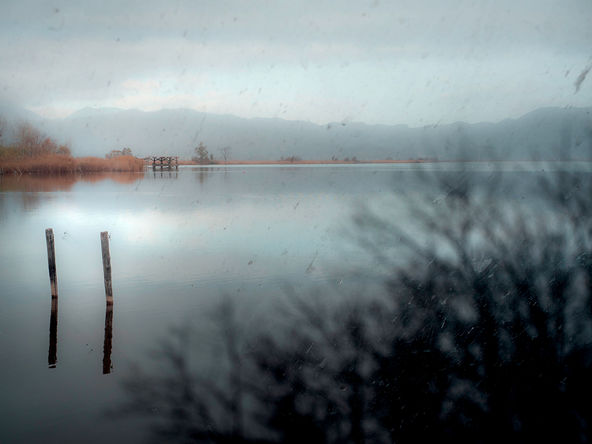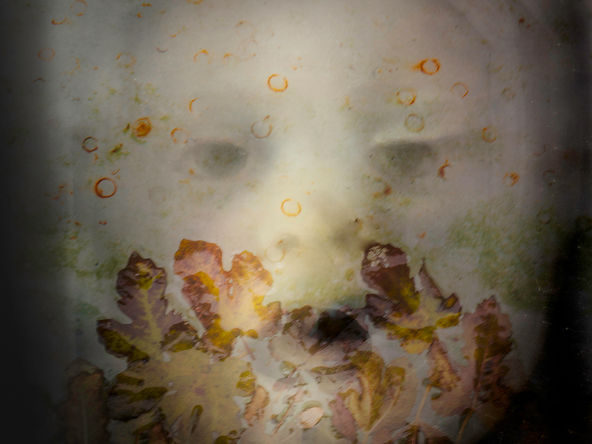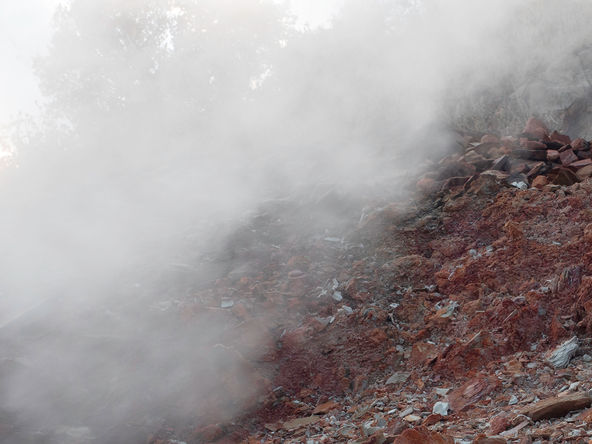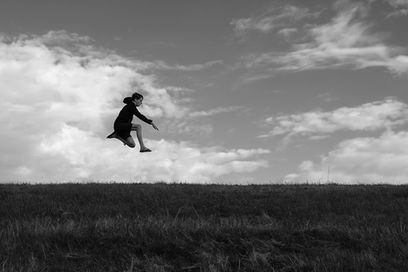
INTERVIEW
February 2, 2025
THAT’S HOW IT IS
(if it seems to me)
Photography by Luisa Montagna
Interview by Melanie Meggs
Luisa Montagna’s artistic evolution bridges music, visual communication, and photography. Trained as a professional cellist, she spent years performing in orchestras and chamber ensembles before dedicating herself to visual arts and photography. This transition marked a shift in how Luisa has approached creative expression — from sound to images, from performance to visual storytelling.
Initially drawn to documentary reportage, Luisa’s work has evolved toward an evocative approach, where layered and blended images challenge the viewer’s perception of reality. Her latest project, “That's how it is (if it seems to me)”, borrows its title from Luigi Pirandello’s well-known play. In this series, Luisa explores the fluid nature of reality — how it shifts depending on the observer, emphasizing that subjective perception takes precedence over objective truth. Through her photographs, she invites viewers to consider the unknowability of what we accept as real and the value of personal interpretation.
In this interview, Luisa Montagna reflects on her artistic progression, the conceptual underpinnings of her recent series, how her visual work continues to engage with broader questions of perception and identity, and her ongoing search for personal and artistic identity.

“Very early on I realized that there exist many different ways of seeing and perceiving reality, as many as there are people. This is one of the reasons why human relationships are so complex. I think the relationship with my cello, or my camera is much simpler, even though we often argue. Joking aside, I like to share my own view of reality. I hope my images shift the focus to another possible way of seeing the world, maybe a fantasy, magical, dystopian world, but never a copy of a real world. That’s why That’s how it is (if it seems to me).”
IN CONVERSATION WITH LUISA MONTAGNA
THE PICTORIAL LIST: Welcome to The Pictorial List, Luisa! Let's start, by talking about photography entering your life at an advanced stage, almost unexpectedly. How did that first experience with a camera shift your creative focus?
LUISA: It gives me great pleasure to join this interesting community of The Pictorial List.
I started photography when I was no longer very young, somewhat by accident, when my husband gave me one of his cameras. At first, I only photographed when I went on vacation and took very “touristy” pictures. When I began to have back problems, I almost completely abandoned the camera because of the weights I could no longer carry. But after a few years the new mirrorless cameras, much lighter, came out on the market and I immediately bought one. From that day on, I never stop photographing. It is since then that my path as a photographer changed totally, almost suddenly, although I am sure that something matured in me during the period of inactivity.
TPL: You began your artistic career as a professional cellist and later transitioned into visual communication and photography. How do you think your background in music influences your photographic work today?
LUISA: Very often I have reflected on this topic, and the answer is not simple. Perhaps it influences the “forma mentis” of the classical musician, who studies a lot, always digs deep into the score and looks for artistic inspiration from it. A great peculiarity of art in general is that it moves feelings, emotions, thoughts: the deepest and most personal part of ourselves. I think I have internalized all that, which is now expressed in my photography in a completely natural way. I also find that there is a great affinity between classical music and photography in the development of stories, the first through compositions consisting of multiple tempos that have a theme as a common thread that runs throughout the piece, the second through storytelling that develops the theme according to a rhythm.
TPL: You overlap and merge images to create a dreamlike aesthetic. What is your process for deciding which elements to combine, and what are you hoping to evoke?
LUISA: I usually use different techniques depending on the type of image I want to achieve. In the series That's how it is (if it seems to me), which is a work-in-progress series, I choose from some of my photos according to my mood at that moment and put them together trying to create an alternative vision of reality. In other series I use a particular technique that gives me a chance to take my dreamy vision in one picture. I really like to make images in the moment, based on what I find interesting and stimulating, it is difficult for me to meditate on individual shots in detail. I can say that I am instinctive in photography. Even the subjects I choose are the result of the moment: I see a situation that I like and I imagine the snapshot. In this sense I think my images are the expression of myself. My hope is to provide starting points for the viewer to experience an emotion, a dream, an escape, an imaginative thinking about an alternative world.
TPL: Do you think your work is more about escaping reality, questioning it, or reconstructing it?
LUISA: Regarding this topic, let me tell you a little anecdote. When I played, a conductor, who often came to conduct, used to say to me during rehearsals: Luisa, don't dream! Maybe it was his way of telling me to be more careful, but now I can say that the escape from reality is part of me, it is an aspect of my character that is reflected in the way I photograph.
TPL: When creating this series, were you influenced by any particular artists, movements, or philosophical ideas?
LUISA: I can say no, or maybe it’s yes, but I don’t realize it. For years, I have studied the lives and works of great or unknown photographers, painters, writers, and composers, but I have no idols — only preferences.
I believe I have arrived at this way of expressing myself because it has matured within me, and when I look back, I see that I have come a long way.

TPL: You describe photography as a path of growth and self-expression. What does “self-expression” mean to you within the visual medium?
LUISA: In my opinion, it means having the ability to translate one's inner world into images — a way of being that is the result of one's character and life experiences.
TPL: What rewards and challenges have you faced as a photographer starting later in life, and how have they shaped your perspective as an artist?
LUISA: I had the good fortune, in quotes, to approach this way of photography just before the pandemic, so during lockdowns I started taking online courses and workshops, and during non-restrictive periods I would practice. The challenges came when I started submitting my projects to national and international competitions and the first satisfactions came. This gave me confidence to continue on my path and I think I will continue to search for myself in photography. It is difficult for me to say whether my beginning at an older age affects the way I photograph, but I think it does. When you photograph, your past, your history comes into play.
TPL: Looking ahead, how do you see your artistic voice evolving? Are there any themes, techniques, or approaches you are eager to explore in the future? What are your photography goals and where do you hope to see yourself in the next 3-5 years?
TPL: What would we find in your camera bag? Is your equipment an integral part of your practice?
LUISA: I use a mirrorless and have three lenses, one of which I use a lot right now. With this equipment I'm trying to figure out what is the best result that I get based on the subjects that I identify. I never prepare my shots, so I test at the very moment I shoot.
TPL: If you could just choose one photographer or artist to shoot or collaborate with for a day...who would you choose? And why?
LUISA: I really love cinema, so certainly a day on the set of a Federico Fellini film. In his films he was able to create dreamy, timeless atmospheres that were a great inspiration to me. Tarkovsky, too, for the universal themes of his films shot with few tools, but with great effectiveness. Now I can only review their great films.
TPL: “When I am not out photographing, I (like to)…
LUISA: Play my cello. It is my second life partner after my husband.”
Thank you, Melanie, for this beautiful interview of yours. It was a good time for me to stop and reflect on my photographic world.

Luisa Montagna’s journey from music to photography reflects a continuous evolution in artistic expression. Her exploration of perception and reality through layered imagery challenges conventional notions of truth, inviting viewers to engage with alternative perspectives. As she continues refining her approach, Luisa remains committed to experimentation, self-discovery, and storytelling through visual media. With aspirations for a solo exhibition and a published book, Luisa's work remains in motion, shaped by instinct, experience, and an ongoing dialogue with art.













































